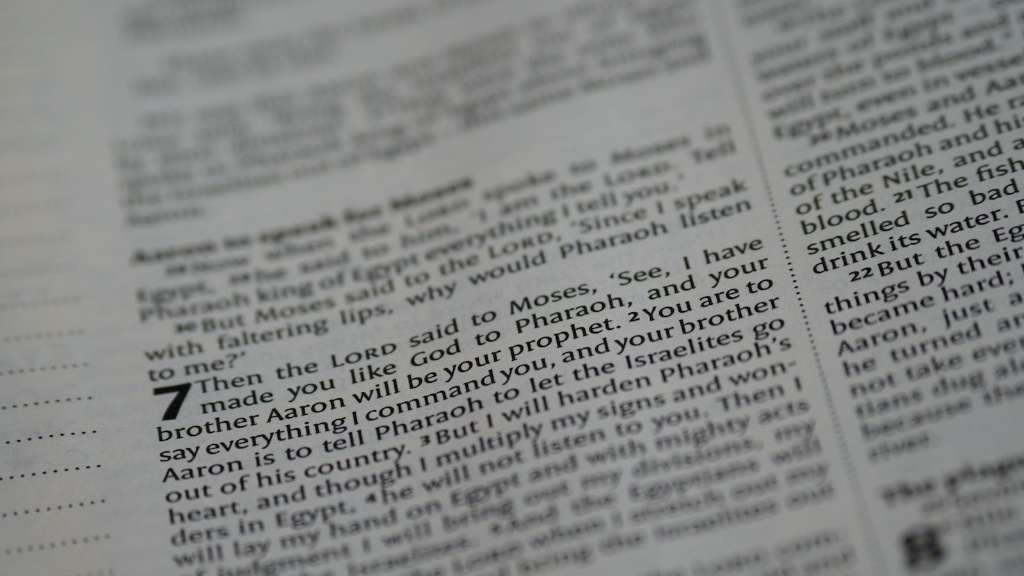Biblical Account of the Moon
The Bible is considered to be the Word of God and contains many references to the moon. In Genesis 1:14-16, God said, “Let there be lights in the expanse of the sky to separate the day from the night, and let them serve as signs to mark seasons and days and years, and let them be lights in the expanse of the sky to give light on the earth.” This creation story in the Bible has been interpreted by many to mean that the moon was created to be a sign to mankind.
The Hebrew word for moon is “yareach”, which comes from the root verb of “to be seen”. This meaning has been taken to indicate that the moon was created in order to provide a means of measuring time and marking special occasions. For example, in Genesis 1:14-15, God speaks of appointing seasons and days and years, and in Exodus, Moses instructs the Israelites to observe the “new moon” month.
When looking at the Bible, it is also important to note that the moon is mentioned alongside “the sun” and “the stars”. This has been interpreted to mean that, in the eyes of God, the moon is an equal to the sun and stars in terms of importance and value.
Some Bible scholars point out that in the creation story, God noted how the moon was “to give light”, which could be taken to mean that the moon was intended to provide illumination or a way of seeing things at night. However, most modern scholars believe that this is an interpretation of the text, not an intended meaning.
In the Old Testament, the moon is often used as a symbol or metaphor for something greater. For example, in Psalm 89:37, the moon is compared to a faithful servant that can be trusted. In other passages, the moon is referred to as a symbol of strength, steadfastness and truth.
Finally, in the New Testament, some Bible scholars believe that the moon could also be a symbol of the church. In Revelation 12:1, the moon is mentioned alongside the sun, stars and a “woman clothed with the sun”, which has been interpreted to be a reference to the church.
Impact of the Moon on Human Activity
The moon has had an immense impact on human activity throughout history. From its use as a marker of time to its influence on ocean tides and animal behavior, the moon has long been associated with Christian and other religious ceremonies, as well as scientific pursuits.
Most cultures throughout history have used the moon as a tool for marking holidays, events, and life milestones. For example, the ancient Egyptians used the moon to measure time and decide when to plant crops and celebrate holidays. The Chinese have used the moon to determine the date of their Lunar New Year, while the Celts and other northern European cultures used the lunar cycle to mark their festivals.
The effect that the moon has on ocean tides has been studied for centuries. Ancient civilizations were able to predict the movements of the moon and their effects on the tides, and many cultures relied on the cycle of the tides for fishing and other activities. Even today, fishermen, surfers, and sailors pay close attention to the moon to help them plan their excursions.
The moon is also thought to have a strong influence on animal behaviour. Many animals migrate and reproduce based on the lunar cycle, and some species only feed during certain phases of the moon. For example, some species of marine life prefer to feed during a full moon while others are more active during the new moon.
Finally, the moon has also been used in scientific pursuits such as navigation, exploration, astronomy, and astrology. Exploration of the moon began in the mid-twentieth century, and some of the earliest images of the lunar surface were taken in 1959 by the first man-made spacecraft, Luna 1. Astronomy, astrology, and other uses of the moon are still practiced today.
Biblical Interpretations of the Moon
The Bible has traditionally been interpreted in various ways by different Christian denominations. Within the Protestant, Catholic, and Orthodox churches, there are differing views on how the Bible should be interpreted, and how one should understand the references to the moon. While some see the moon as a sign from God and a measure of time, others view it as a symbol of strength, steadfastness and truth.
In relation to the moon, some maintain that God created it to be a sign to mankind, while others take a more allegorical approach, viewing it as a symbol of the church, or of something greater. For example, some Christian theologians maintain that the moon, along with the sun and stars, represent the Trinity – God, Jesus, and the Holy Spirit – while others interpret the moon in relation to the Old Testament’s themes of faith and the new covenant.
There have also been interpretations that the moon is meant to symbolize the waning and waxing of joy in a believer’s life in relation to their relationship with God. Still others view the moon as a representation of Satan, as a symbol of death, and as a representation of God’s judgment.
Whatever interpretation one takes, it is clear that the moon has been a source of fascination and debate throughout the centuries, and remains an important feature of the Bible’s narrative.
Astrological Meanings
Astrological readings, a practice or belief system in which the movements and relative positions of astronomical objects are interpreted as having an influence on human affairs and the natural world, can provide interesting meanings and interpretations in relation to the moon. Astrological readings can help to explain some of the more difficult passages in the Bible, by providing insight into their symbolism and spiritual meaning.
For example, the waxing and waning of the moon has been interpreted in astrological readings to mean the growth and decline of one’s spiritual light and understanding. Additionally, the new moon has been seen as a time of spiritual renewal, while the full moon has been seen as a time of spiritual abundance.
Through astrology, the moon is also associated with emotions and intuition. The new moon is seen as a time of rebirth, while the full moon is associated with completion and fulfillment. Many astrologers associate the moon with love and the emotions associated with it, such as hope and compassion.
Finally, the moon is also seen as a representation of the rhythms and cycles of life, and is associated with change and transformation. Astrologers believe that when the moon is in a particular phase, it can provide insight into one’s personal journey and relationship to the divine.
Scientific Facts about the Moon
In addition to its spiritual and cultural significance, the moon also has a number of scientific facts and implications. This is largely due to its size and position in relation to the earth, as well as its gravitational pull.
The moon is the fifth-largest natural satellite of the planets in our solar system, and it is located about 238,900 miles from earth. Its diameter is about 2,159 miles, and it has no atmosphere and very little gravity, which means that its landscape is constantly changing.
The moon’s gravitational pull is also important. Due to its positioning, the moon’s gravity exerts tidal forces on the earth and is responsible for the ocean tides. Its gravitational force also helps to stabilize the earth’s rotation, which is important for life on earth.
The moon is also the only natural satellite of the earth. It has no other moons and its light is largely reflected light from the sun. This means that the moon’s light is not a source of heat and light the way the sun is.
Finally, the moon is constantly moving and changing its position. This is referred to as its “orbital period”, and it takes approximately 27.3 days for the moon to make a complete revolution around the Earth.
Symbolic Representation of the Moon
In addition to its scientific and spiritual significance, the moon has also been a source of artistic inspiration throughout the ages. Many cultures have used the moon as a symbol or metaphor for something greater, such as love, hope, or transformation.
The moon has been used as a subject for poetry, painting and sculpture, and is often featured in literature, music, and visual arts. In literature, the moon can represent the idea of a journey through darkness, a symbol of beauty and mystery, or a source of strength and guidance.
In popular culture, the moon is also often used as a metaphor for different elements of human experience. Some of the most common references to the moon include its association with romance, mystery, and nostalgia. The moon is often associated with longing, dreaming, and a sense of longing for something unattainable.
Finally, the moon is often used as a representation of femininity. In art and literature, it is often featured as a symbol of femininity, fertility, and creativity. In some cultures, the moon is seen as a manifestation of the divine and a source of strength and guidance.





